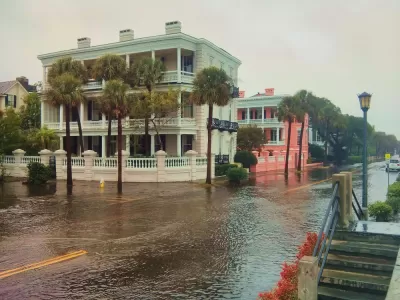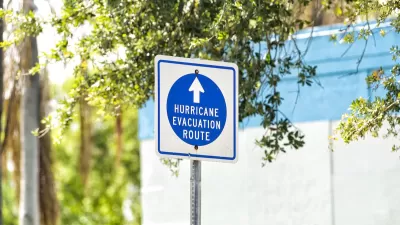Drawn by affordable property, low taxes, and job opportunities, high numbers of Americans continue to move to flood-prone areas even as the threat of catastrophic flooding grows.

Despite growing flood risks, developers continue to build—and cities continue to approve—housing in threatened areas and flood plains to accommodate growing populations. An article by Anna Phillips in the Washington Post describes the lack of urgency shown by many cities when it comes to planning for future disasters.
Yet “In 2019, the Congressional Budget Office estimated that hurricanes and tropical storms cause about $54 billion, on average, in annual damage across the United States.” However, “Realtors aren’t required to disclose the flood history of the properties they sell and finding that information can be difficult. In addition, many of the Federal Emergency Management Agency’s flood maps are decades out of date and don’t account for sea level rise or flooding from sudden rain storms.” This means people continue to move to flood-prone areas of the Southeast, attracted by mild climates, affordable housing, and job opportunities. According to Phillips, “Census projections suggest the Southeast will see the largest population gains over the next two decades, through 2040.”
Some cities are starting to update building codes, encourage inland development, and fortify their shorelines against future flooding. “But these types of projects are still relatively rare and, so far, most have not attempted to slow down development,” Phillips points out.
FULL STORY: More Americans are moving into hurricane zones even as climate risks mount

Alabama: Trump Terminates Settlements for Black Communities Harmed By Raw Sewage
Trump deemed the landmark civil rights agreement “illegal DEI and environmental justice policy.”

Study: Maui’s Plan to Convert Vacation Rentals to Long-Term Housing Could Cause Nearly $1 Billion Economic Loss
The plan would reduce visitor accommodation by 25% resulting in 1,900 jobs lost.

Planetizen Federal Action Tracker
A weekly monitor of how Trump’s orders and actions are impacting planners and planning in America.

Wind Energy on the Rise Despite Federal Policy Reversal
The Trump administration is revoking federal support for renewable energy, but demand for new projects continues unabated.

Passengers Flock to Caltrain After Electrification
The new electric trains are running faster and more reliably, leading to strong ridership growth on the Bay Area rail system.

Texas Churches Rally Behind ‘Yes in God’s Back Yard’ Legislation
Religious leaders want the state to reduce zoning regulations to streamline leasing church-owned land to housing developers.
Urban Design for Planners 1: Software Tools
This six-course series explores essential urban design concepts using open source software and equips planners with the tools they need to participate fully in the urban design process.
Planning for Universal Design
Learn the tools for implementing Universal Design in planning regulations.
Caltrans
Smith Gee Studio
Institute for Housing and Urban Development Studies (IHS)
City of Grandview
Harvard GSD Executive Education
Toledo-Lucas County Plan Commissions
Salt Lake City
NYU Wagner Graduate School of Public Service





























